Slime isn’t only for kids, as this DIY cleaning slime demonstrates. Slime cleaning is a secret weapon to pick up crumbs and dirt from small spaces. Pick up the crumbs with homemade cleaning slime instead of blowing them around with compressed air.
Slime has been the subject of headlines all over the Internet about the latest electronic cleaning craze. This gooey cleaning product is marketed as an excellent method to remove dirt and lint off keyboards, modems, and other electronic devices.
Car-cleaning slime is another popular use for the stuff.
Of course, the more creative members of the Internet immediately began sharing recipes for how to make DIY cleaning slime at home.
I’ve found several easy formulas that really work and don’t leave your keyboard or electronics covered in dripping gunk via trial and error.
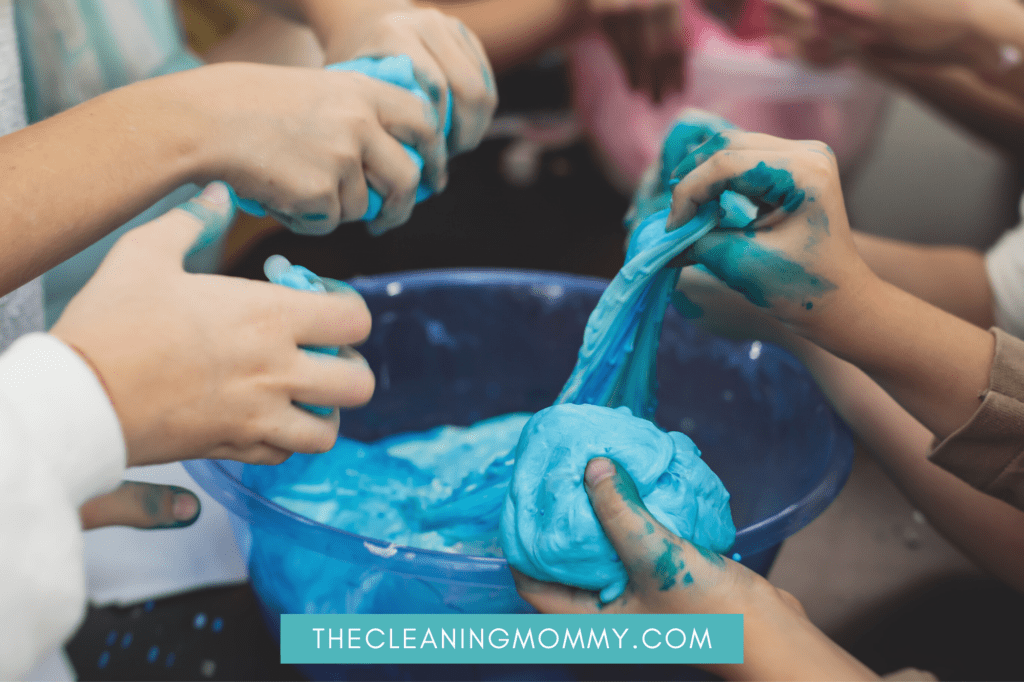
The Cleaning Slime’s Scientific Basis
When Elmers School Glue (or generic brand School Glue) is added to a water/borax solution, the glue molecules (polyvinyl acetate) combine with the borax (or other ingredients) molecules to form a highly flexible, cross-linked polymer.
This creates a handy cleaning slime ( a little thinner than silly putty) that will get dirt out of cracks and crevices, but will not leave any residue.
Uses For Cleaning Slime
Using dust-cleaning slime is a pretty easy. You just lay in onto the surface you want to clean, and then wait a for it to ooze into any cracks. Once it is set in, just remove it. The slime sticks to any particles that are on the surface and just lifts them away.
There are so many uses for cleaning slime around the house. While it was originally developed as a way to clean electronics, keyboards etc. the uses have evolved over time:
- Trap dust from your computer keyboard, phones, remote controls, or any other electronics.
- Get all the crumbs out of your refrigerator drawers.
- Clear out your car cup holders, console buttons, dash board, steering wheel, door locks etc.
- Remove dust from almost any surface.
- Great for little solid knick-knacks around the house.
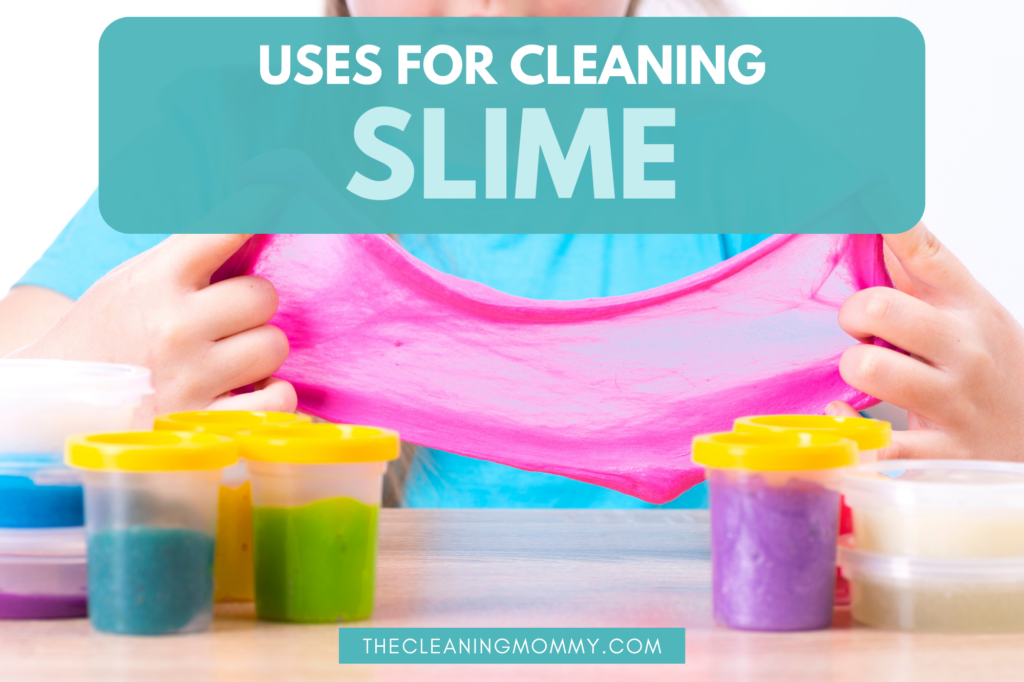
DIY Cleaning Slime With Borax
Wear plastic gloves when making or using slime of you have sensitive skin. Making DIY cleaning slime may be done in a few ways. Here are the ingredients for the Borax recipe:
- 1 1/2 cups hot water
- a quarter cup of borax
- one 4 oz. bottle white school glue
- (optional) food coloring
- Glitter Glue (really just for fun)
Combine 1 cup warm water and the Borax in a small mixing dish. Stir until the Borax is completely dissolved. Set aside this mixture. Combine the remaining 1/2 cup warm water, the full container of glue, and a few drops (2-3) of food coloring, if desired, in a bigger mixing bowl.
Stir until everything is well mixed. Stir in the Borax water to the glue mixture. Stir the ingredients until it transforms from a gooey, sticky liquid to a firmer consistency that you can knead with your hands.
Make a kneading motion with your hands now for about 5 minutes.
To use this cleaning slime, make a ball out of it first. Dab the slime ball at the places that need to be cleaned. Allowing it to sit will cause it to ooze into the cracks as it heats.
DIY Cleaning Slime Without Borax
Borax is not available to everyone, and some individuals dislike it. Here’s a slime-cleaning recipe that also works without it. You’ll require:
- Measuring cup
- 1/2 cup slime activator (Amazon Basics) or any liquid starch
- 1 bottle of clear school glue (like Elmer’s glue)
- Optional: 1/4 cup warm water
- Couple drops of food coloring
In a mixing bowl, whisk the slime activator or liquid starch into the entire container of clear glue. Continue to whisk until everything is well mixed. Stir in the warm water until everything is well combined.
Take the slime in your hands and knead it until it no longer adheres to your fingertips. It’s all set to go!
Between usage, keep both types of cleaning slime in an airtight container.
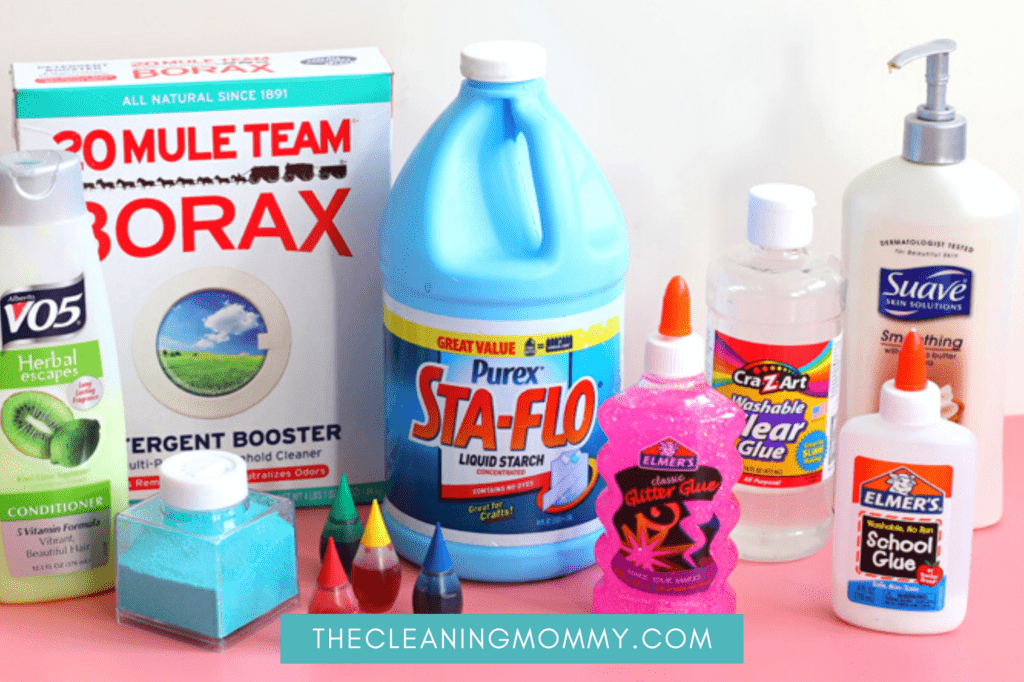
Baking Soda Cleaning Slime Recipe
Another of the best cleaning slime recipes uses baking soda and contact lens solution with your glue.
Here’s what you need:
- 4-6 ounce bottle of school glue
- 1/2 teaspoon baking soda
- 1-1/2 tablespoon contact lens solution
Mix all the ingredients together for a nice smaller dust-busting blob of cleaning slime. Great for use in the house or car. It gets into all of those hard-to-reach places like air vents, console seams, and tight nooks and crannies. It picks up all the dust and leaves no trace behind.
How To Make DIY Cleaning Slime With Pine Sol or Lysol
Making slime using Pine Sol or Lysol is another great way to create this dust grabber with materials you may already have.
- Put about 8 oz of clear glue into a container.
- Add a teaspoon of Lysol or Pine Sol to the glue and mix
- Add teaspoons of cleaner into the mix until you reach the consistency you want.
This homemade cleaning slime will also have a nice scent to go along with the grabbing power.
Texture of Cleaning Slime
Cleaning slime has a somewhat tacky yet non-sticky feel. It is sort of like silly putty, but a bit thinner. The slime may be made into a dry ball in your palms and does not “melt” like slime for kids.
Depending on which recipe you use, and how you mix it, there may be a small bit of residue after sliming. If this does occur, just wipe clean with a damp microfiber cloth.
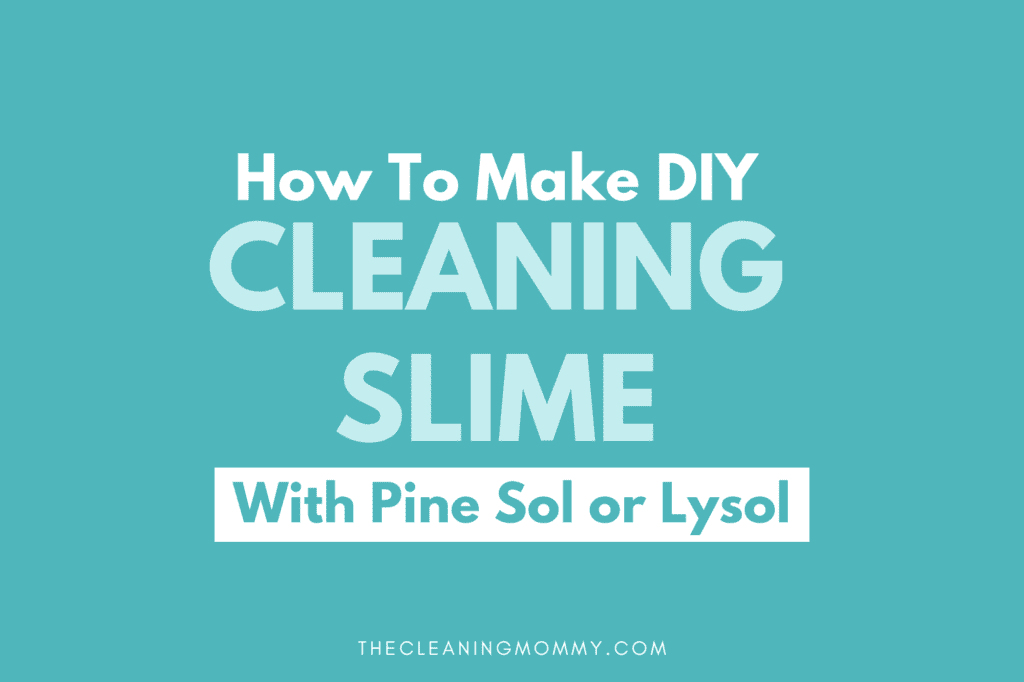
Where To Use Cleaning Slime
Cleaning slime is not difficult to use. To clean something, knead a portion into a hard ball and then dab it with it. Allowing the slime to sit on any piece of electronics for more than a second can lead it to ooze inside, potentially ruining the device.
After making your own slime, it seems like a waste of time when you can just use a cleaning towel. It picks up dirt and lint from nooks and crannies, but if the mixture isn’t well kneaded, it might leave a residue. It was, however, a lot of fun to play with while cleaning, so it’s worth a shot.
It also removed dirt from nooks and crannies that are difficult to reach with a conventional cleaning cloth.
Use your DIY cleaning slime to clean the following hard-to-reach areas:
- Television remote and laptop keyboard
- The case for your phone
- The dashboard and console of your car
- Car vents, cup holder, dash board, console.
- All those little pores on the surface of your Bluetooth speaker!
- Whether you’re needing earbuds or headphones
- Cleaning slime can be used in a variety of ways. All you have to do if it becomes too dirty is chuck it away and start over!
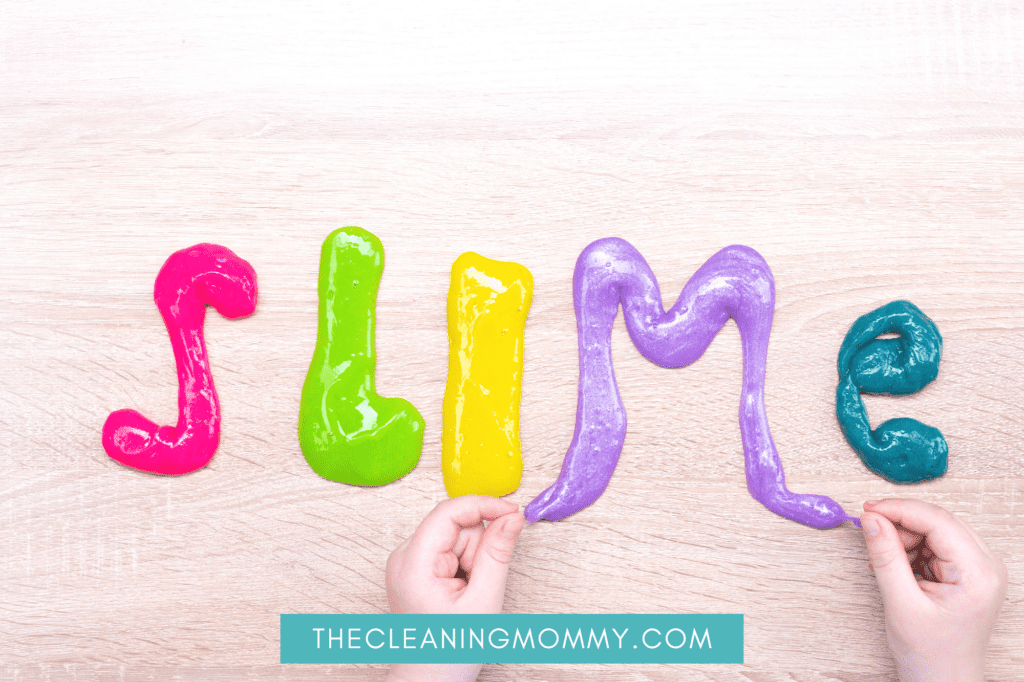
Storing Cleaning Slime
After making slime, you can store it in an air tight container like a Tupperware so that you do not have an oozing mess between cleans. You can also use zip lock bags to store the goop. Possibly divide it into a separate container so you don’t use it all at once.
Reusing Slime
DIY cleaning slime can be reused many times over. It will continue to pick up dust and dirt until you feel it is the time to make a fresh batch. Then simply throw it away and start anew.
Can You Clean Out The Slime for Reuse?
It is not possible to clean the dirt you pick up out of your slime. But even so, you should get multiple uses out of a batch before having to throw it out and making a new batch.
Making your own homemade cleaning slime is fun and easy recipe. It has become very popular in recent years due to the fact that it will give you tons of uses, and get clean where typical tools will not go. Try some out today!
Other Cleaning Articles Like This:
- Cleaning Hacks Using Ketchup
- The Ultimate Guide To Cleaning With Vinegar
- Homemade Jet Dry
- Can you put fabric softener in the liquid bleach dispenser
- How to wash clothes with poop on them
- 5 minute cleaning tasks
- Quotes about decluttering

Grainne Foley
Grainne Foley is a wife and mother of 2 great kids. During her 5 years of full time RV travel, Grainne learned to become very efficient at household chores, in order to make time for family adventures. Now, back in a house, she has continued to create tools and techniques to help others lighten the load of household organization and cleaning.
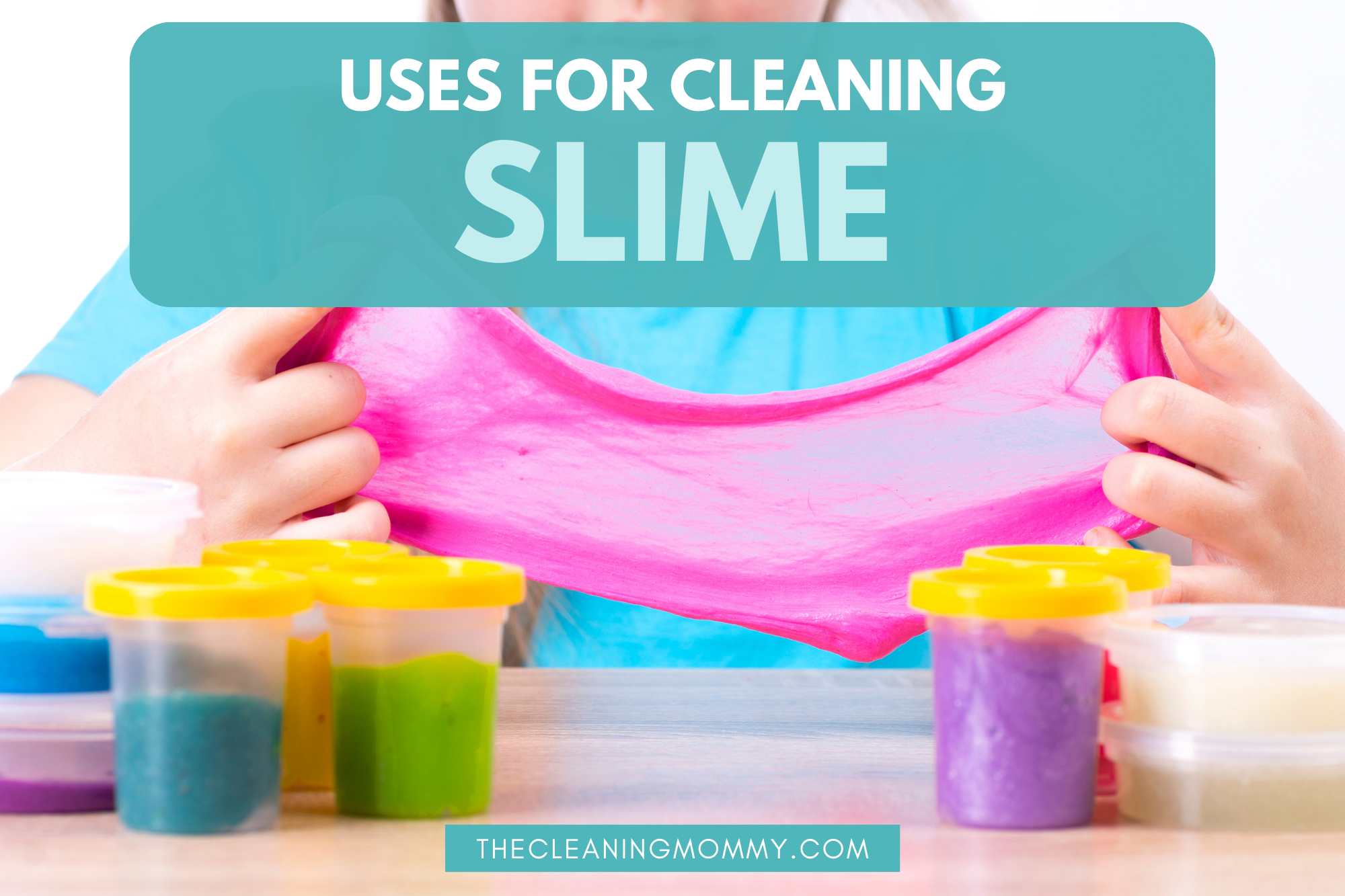

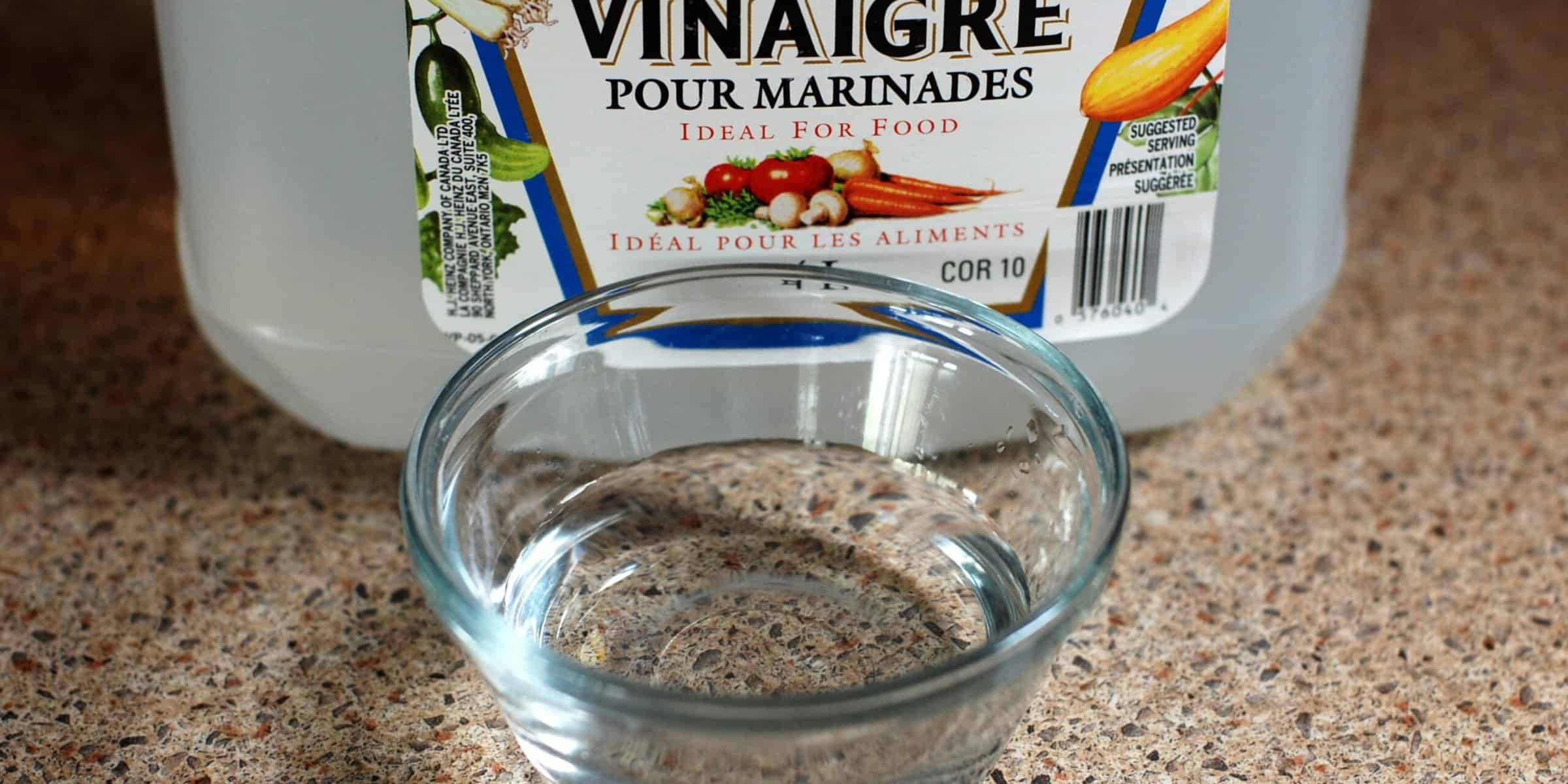
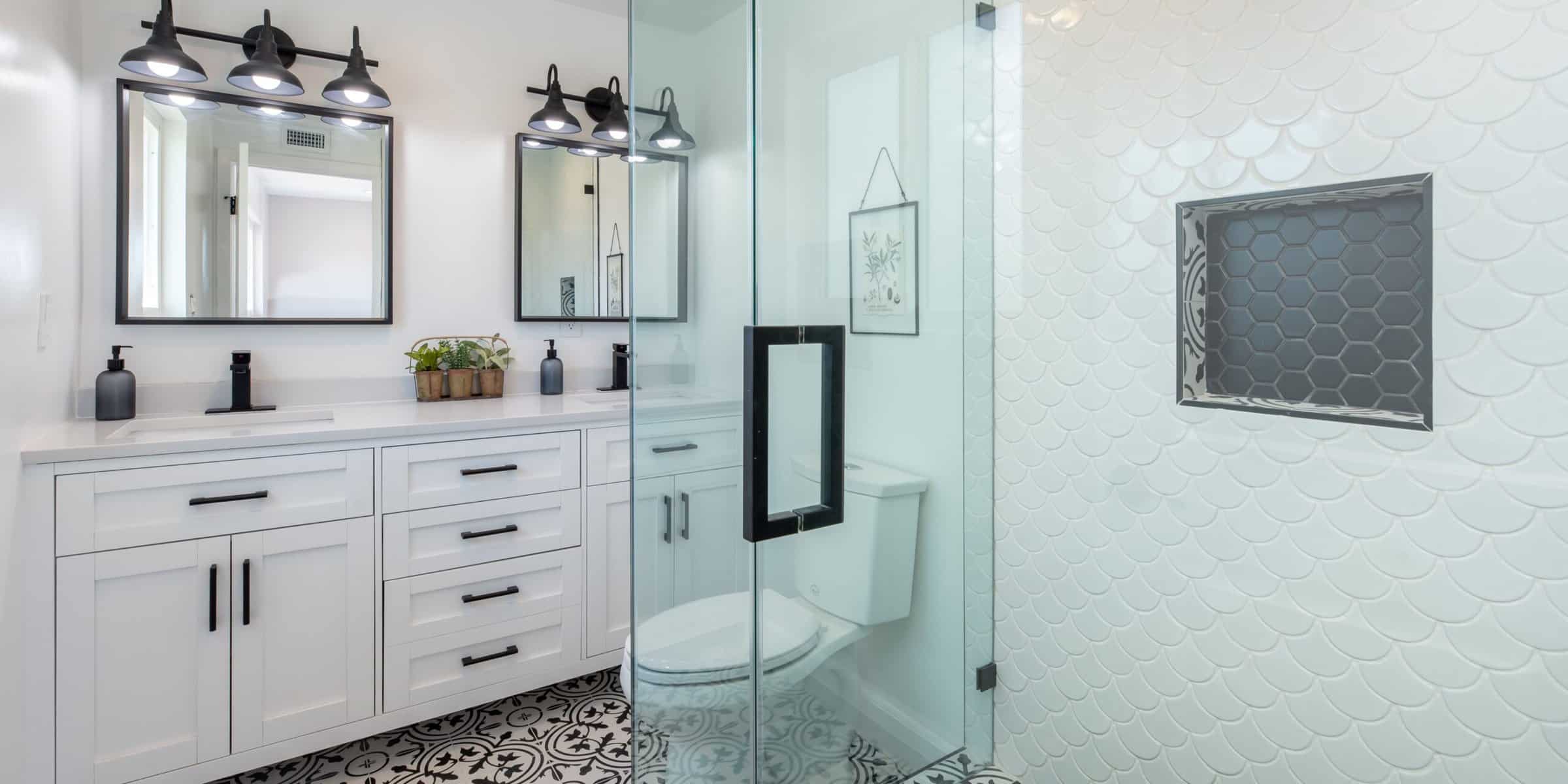
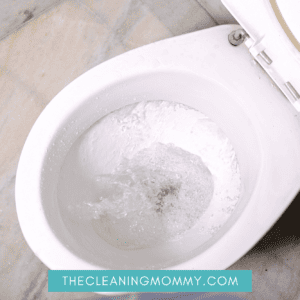
Leave a Reply